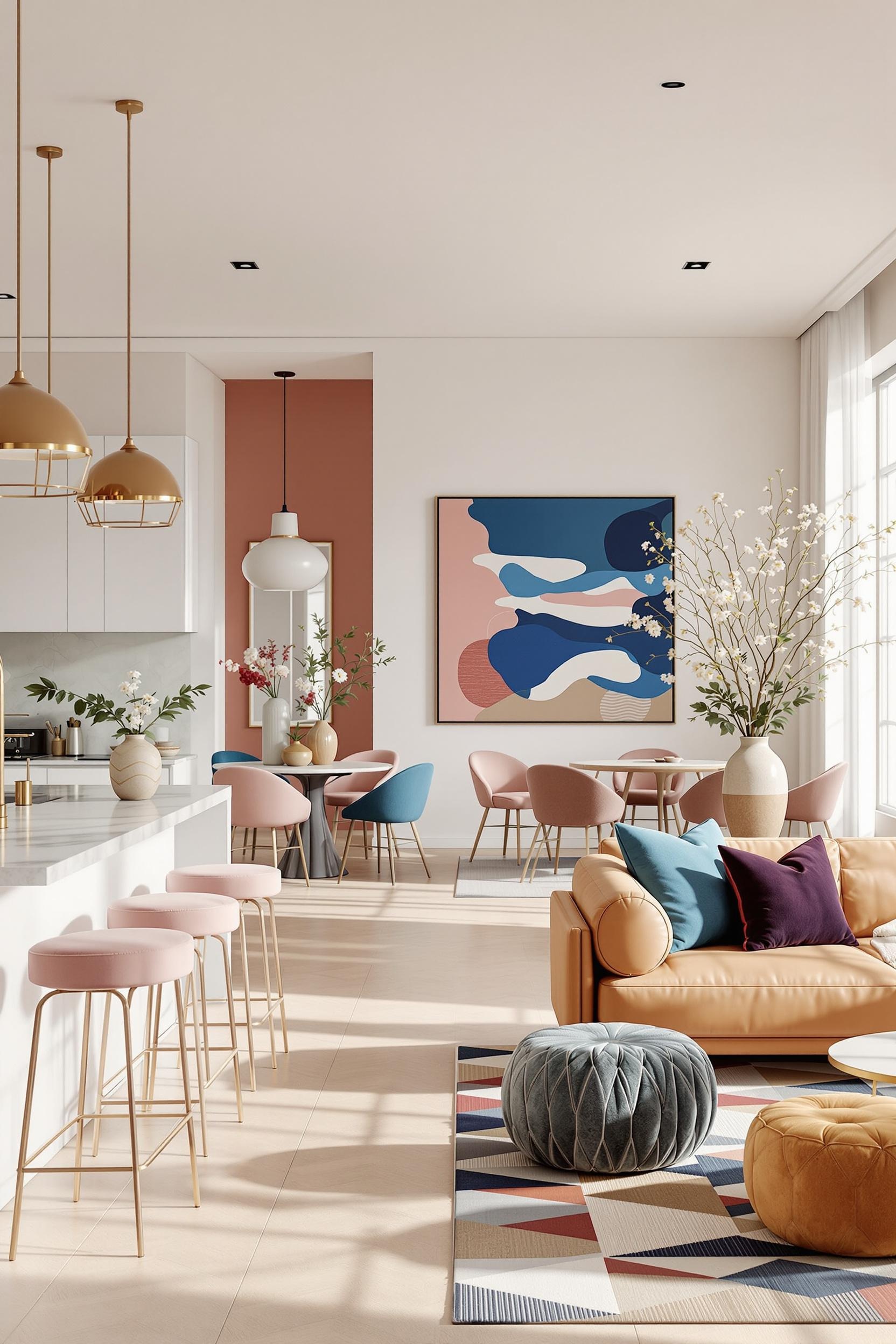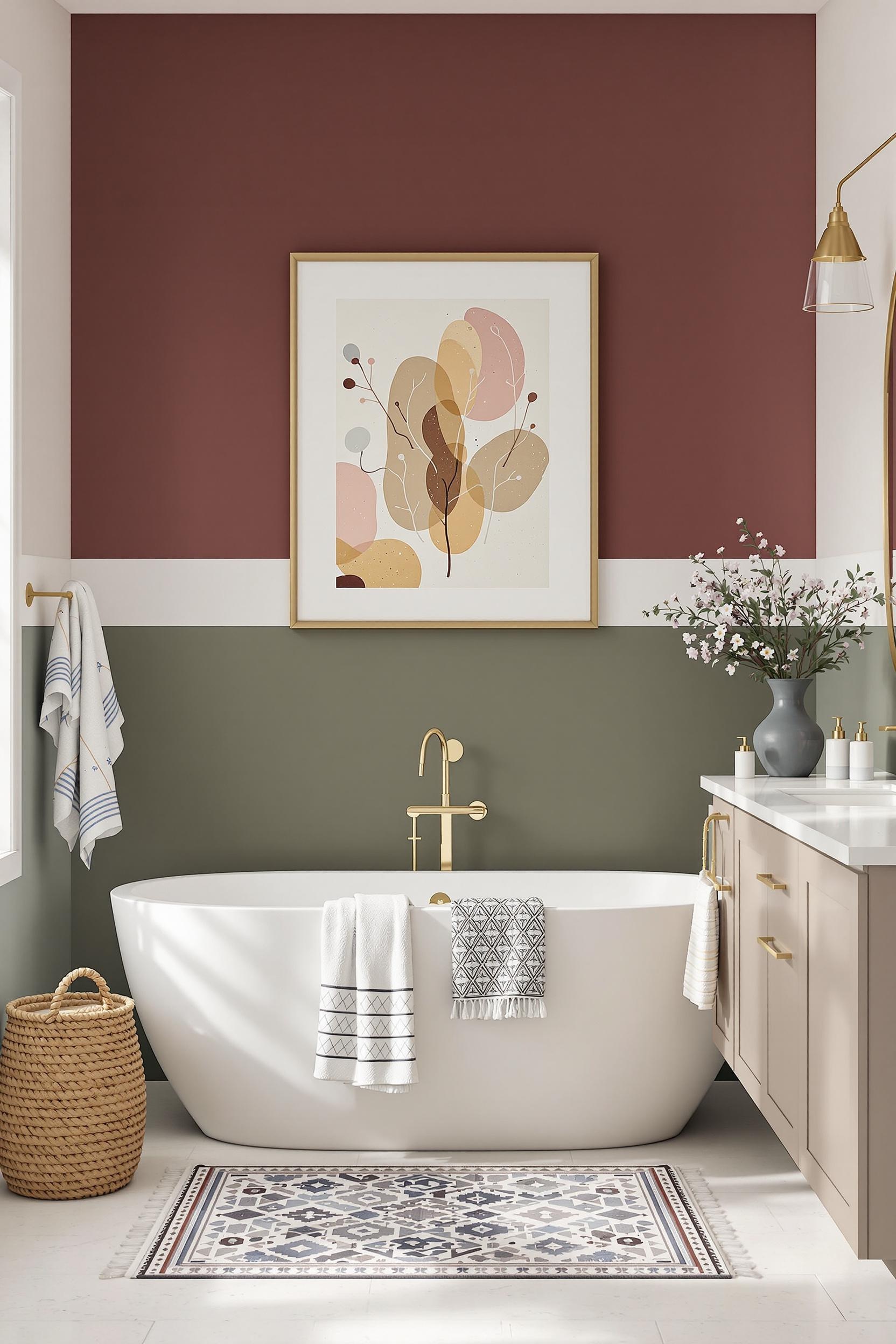
Transforming Open Spaces: Innovative Color Zoning Strategies for Modern Living
As an interior designer passionate about functional, stylish spaces, I’ve seen the amazing impact of color zoning for open spaces. Whether you’re updating a loft or refining a studio, minimalist color schemes and interior design color blocking can completely change the energy of your home. No walls? No problem. Strategic use of color can distinguish your living room from your dining nook, your kitchen from your work area—all without building a thing.
This isn’t just about style. Smart zoning helps define function, organizes your space visually, and makes everything feel more intentional. Using open-plan living room ideas with color accents for minimalist design creates spaces that feel larger, flow better, and reflect your personality.
Here are some key benefits of modern color zoning tips:
- Clear separation without walls
- Design flexibility for small and large homes
- Personal touches through color
- Smarter use of lighting and materials
- Psychological comfort and improved functionality
Let’s explore how thoughtful use of color creates zones with purpose—without sacrificing your minimalist dreams.
Interior Design Zoning Ideas: Understanding the Power of Color
The Psychology Behind Color Zoning
Color zoning does more than break up large spaces. It taps into how we feel and think in certain color environments. Warmer hues like terracotta create cozy dining nooks. Cool blues lend focus to workspaces. Using these psychological cues, I’ve helped people feel more at ease and productive in their homes. In fact, studies show that certain colors can even improve mood and mental clarity.
In kitchen-dining room color zones, using a richer color for the dining area and a lighter tone in the kitchen draws the eye naturally. It tells us, “This is where we eat, and that’s where we cook.”
How Color Shapes Perception in Open Plans
Color zoning also plays visual tricks. Lighter hues open up a space, while saturated or darker shades pull in focus to define a particular zone. This is especially useful in creating subtle feature wall interior design moments to highlight a reading area or TV nook.
Here are a few quick ideas I use when zoning modern open plans:
- Accent walls add definition without clutter
- Muted gradients help rooms feel calm and connected
- Mixing finishes—glossy or matte—adds texture to color
Interior Design Color Blocking: Techniques That Redefine Open Living
Mastering Color Blocking in Modern Interiors
Interior design color blocking isn’t only about bold shades—it’s about creating structure and energy. I often use geometric shapes: a square in pale salmon for a breakfast bench or a vertical color stripe to define work-from-home areas. These shapes organize space easily and make a room feel fresh and exciting.
To keep the look balanced, a consistent palette is essential. You might stick to a three-color system: a neutral base, a dominant zone color, and an accent to connect spaces. Dig into minimalist color schemes to find the tones that make you smile and create flow across rooms.
Modern Color Zoning Tips that Work
Color blocking should support how you use the space, not just look good. Here are a few tips that I rely on often:
- Highlight high-use areas with engaging colors.
- Keep transitions subtle with tone-on-tone shifts.
- Use natural light to pull together different color zones.
These approaches help ensure even bold designs still feel cohesive and thoughtful. You’re not just choosing color—you’re choosing how each part of your home feels and functions.
Adding Texture to Color Zoning for Deeper Impact
Going Beyond Paint with Materials
Color is only part of the design equation. Texture adds dimension. Even a simple cotton rug or velvet chair defines an area as much as a painted wall. A soft gray rug beneath a dining table combined with brass lighting overhead subtly divides the space without saying a word.
Layering finishes is another favorite technique of mine. I love mixing a satin finish navy wall with a natural wood accent table to give feeling and purpose to a reading corner. Try mixing:
- Wood grains with warm tones
- High-gloss surfaces with reflective decor
- Natural materials like rattan or linen in sitting areas
This multilayered approach to texture and tone enriches your home and makes every zone feel curated and complete.
Interior Design Zoning Ideas Put Into Action
Kitchen-Dining Room Color Zones That Work
One of the simplest and most effective applications of color zoning is between the kitchen and dining zones. I often zone these side by side using natural contrast. Soft whites and stainless shades in the kitchen flow beautifully into warm clay or deep sage tones where meals are enjoyed. A striking rug underneath the dining table brings everything together.
If you’re working with less space, use lighting and flooring to anchor zones. Swap overhead light styles between areas. Even something as simple as wood planks laid in a different direction can create a silent but solid divider.
Feature Wall Interior Design for Zoning
Sometimes, a well-placed feature wall is all a space needs to come alive. A contrasting tone behind your sofa or bed can signal: this is where we relax. For example, I’ve used navy, emerald green, even matte black as peaceful yet defining choices on feature walls combined with creamy borders in open-plan designs.
For minimalist schemes, I use subtle plays in finish—like matte versus gloss in the same color—to create a sense of movement as the light changes through the day.
Transforming Open Spaces with Strategic Design
Tips to Start Zoning Your Home with Color
Not sure where to start? Choose one spot in your home—maybe the transition between your living and dining area. Pick a color that complements your decor and apply it with purpose. Watch how a simple shift, maybe even just a colored ceiling or striped section of wall, can redefine everything.
When you’re confident, test bold looks. Create an office zone with a painted alcove. Add color to built-in shelves to give depth. Paint door frames or internal thresholds to prompt a visual change as you move room to room. Small steps build big change.
Your Design Journey Starts Here: Get Inspired!
I’m excited to help you unlock the potential of your living spaces! Ready to start zoning with confidence? Let’s go!
- 👉 Sign Up for Exclusive Design Insights: Join my newsletter and get fresh modern color zoning tips right to your inbox.
- 💬 Share Your Thoughts: Comment below! What open-plan living room ideas are you trying? Any recent success or struggles with color accents for minimalist design?
- 📸 Color Zone Challenge: Snap a picture of your results and tag your makeover with #ColorZoneMagic.
Pro Tip: Don’t be afraid to mix materials and let your instincts guide you. Your home






